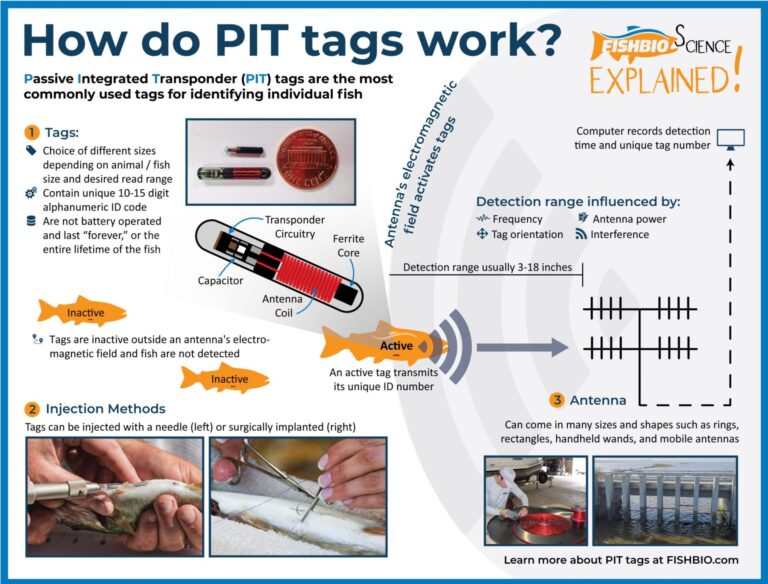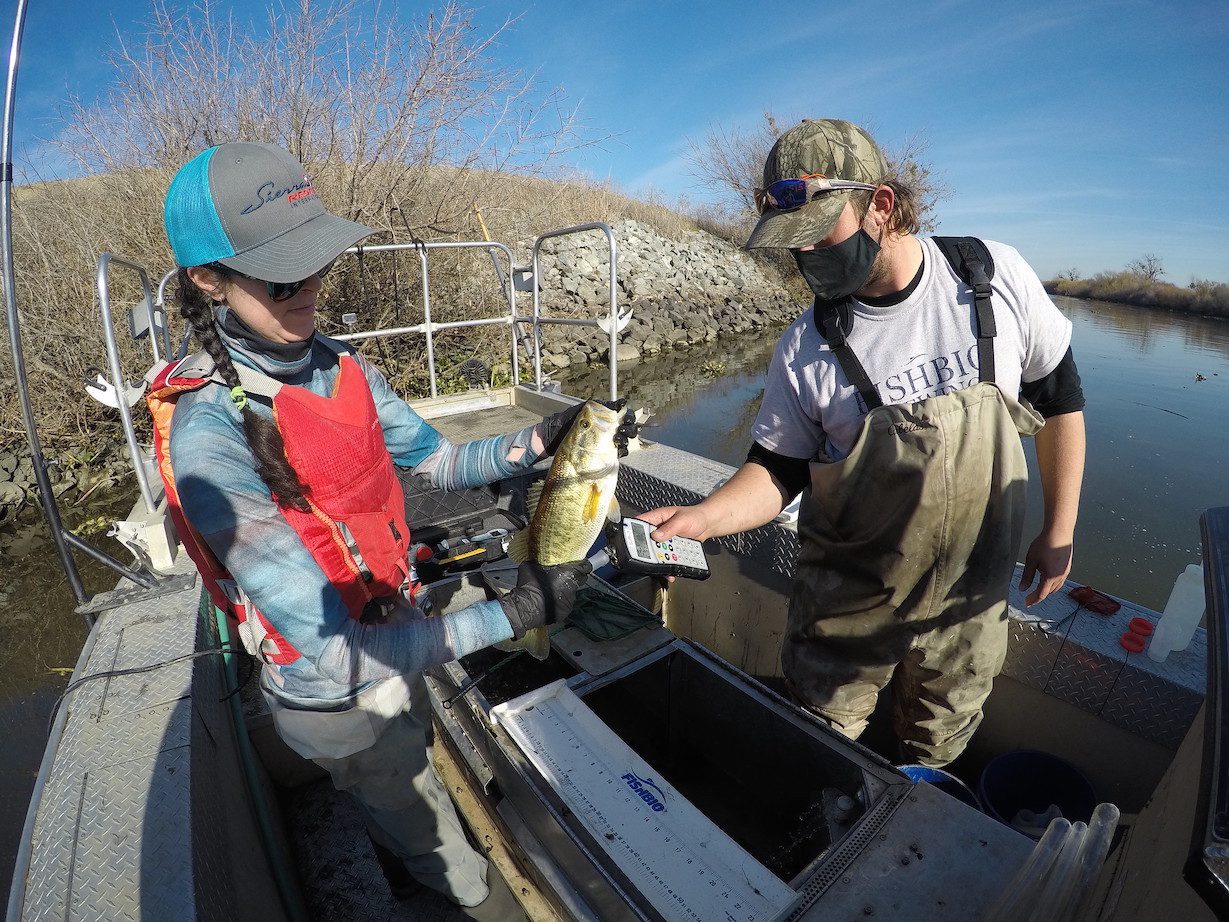Wednesday February 3, 2021

The life cycle of a fish is often largely invisible, muddied by murky waters. This fundamental challenge to aquatic research has led to the development of many technologies to help track fish movement. One of the most commonly used fish tracking technologies combines the benefits of not needing a power source with the convenience of remote detection. Passive Integrated Transponder tags – commonly referred to as PIT tags – contain the same technology as the “microchips” used in pet dogs and cats, and are widely used in fisheries studies to track fish movement, survival, and growth over time. Our infographic above breaks down the PIT tag basics.
Each PIT tag is a small, pill-shaped cylinder of glass that houses a radio transponder containing a unique code. Unlike other tags that actively transmit a signal (such as satellite or acoustic tags) and thus require batteries, PIT tags respond to a signal emitted from a scanner. These scanners, also known as readers, send out an electromagnetic charge, and when a PIT tag is within range, the transponder it contains reacts to this charge and transmits the tag’s unique identification code. The code is then recorded by a device connected to the reader, providing a specific detection of an individual fish. Although handheld scanners can be used to check for tags in fish that have been captured, readers are most often installed into antenna arrays to detect any tagged individuals that swim by. When multiple antennas are used, it’s even possible to determine the direction of fish movement. Mobile antennas can also be used to detect fish in a study area. The lack of a battery means that a PIT tagged fish can be detected over the course of its entire lifecycle. Moreover, they are much smaller than tags that actively transmit a signal, and therefore can be implanted in tiny animals. PIT tags also offer an advantage over physical identification tags because they can be detected remotely, meaning recapture of the tagged fish is not required.

There are two different varieties of PIT technology, each of which offers unique advantages and disadvantages. These variants are known as full-duplex (FDX) and half-duplex (HDX). The scanners used in the FDX system both transmit an electromagnetic charge to detect PIT tags and receive information from nearby PIT tags simultaneously, whereas the scanners used for the HDX system transmit a charge, then stop to “listen” for nearby tags, and then begin the cycle again. Because they constantly emit a charge and listen for transmitted PIT tag identification codes, FDX systems detect FDX tags at a fixed rate of 32 reads per second, while HDX systems may detect tags between 1 and 40 times per second depending on the reader settings. However, because tags designed for HDX systems contain a capacitor to momentarily store energy from the scanner, they are able to emit a stronger signal, and therefore can be detected from a greater distance than FDX tags.
Another tradeoff between the two tag varieties is their size. While the capacitor in HDX tags improves their read range, it also makes them larger – larger HDX tags are 23 by 3.8 millimeters and smaller HDX tags are 13 millimeters. Although the smaller tags have a shorter read range than the larger tags, they do allow for tagging of smaller fish. FDX tags can have a much smaller diameter than HDX tags (1.5 millimeters), and can be injected into fish as small as 45 millimeters in length. Small HDX and FDX tags may be injected in fish using a hypodermic needle, whereas larger tags generally require surgical implantation.
Because of their more limited read range, FDX tags and scanners are more suitable for narrow passageways like fish ladders. When a larger antenna is necessary to cover a full stream channel, an HDX system is generally the better choice. Because they operate on 12 to 24 volts of direct current electricity, energy can be easily provided to these systems through the use of solar power, making them well-suited for remote locations where frequently replacing batteries would be challenging. Exciting new applications of PIT tag technology for fisheries monitoring include include the use of systems that can detect both FDX and HDX tags (technology that has been used for many years in the livestock industry), as well as systems that can can remotely transmit data via a cellular signal, allowing scientists to monitor detections from afar. FISHBIO has developed a number of unique PIT tag antennas installed everywhere from diversion tunnels and large rivers to fish counting weirs (shown above) and fyke traps. We also regularly implant PIT tags in fish such as rainbow trout/steelhead and striped bass for long-term monitoring and research studies. While no perfect methodology exists, the longevity of PIT tags and the adaptability of PIT tag detection systems make them an enticing option for aquatic biologists working in systems around the world.
